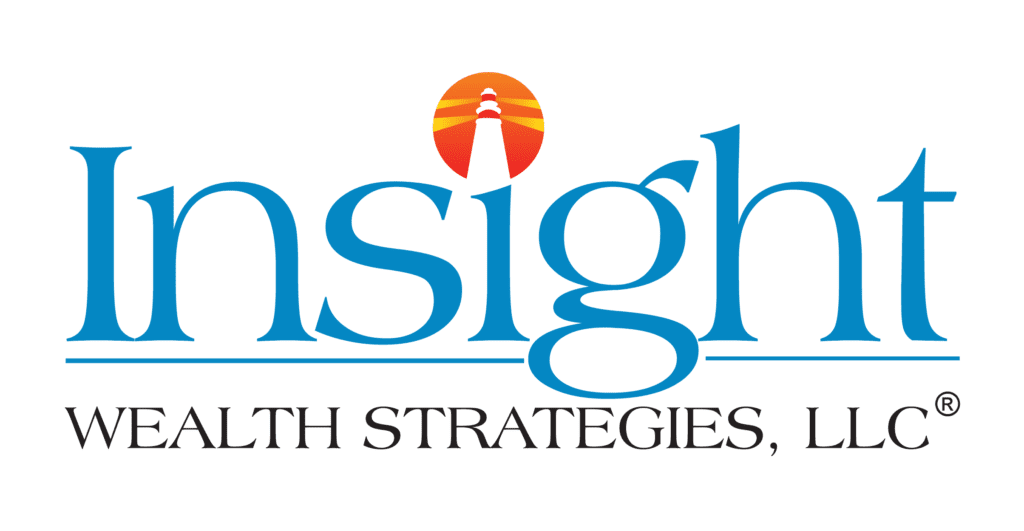5 Self-Employment Retirement Options to Consider
In the dynamic landscape of entrepreneurship, it can be easy for business owners to get lost in the whirlwind of building their ventures, often neglecting to secure their financial future. However, creating a robust retirement savings plan isn’t just a luxury; it’s a necessity for entrepreneurs looking to safeguard their hard-earned success and reduce reliance on Social Security. As the journey of entrepreneurship can be full of uncertainties, having a well-thought-out retirement strategy becomes paramount. In this article, we’ll delve into the importance of entrepreneurs establishing a retirement plan and explore several viable options to consider. From the tried-and-true Traditional or Roth IRAs to more tailored choices like Solo 401(k), SEP IRA, SIMPLE IRA, and the comprehensive Defined Benefit Plan, we’ll unravel the features and benefits of each, helping you chart a course toward a financially secure retirement.
1. Traditional or Roth IRA
Among the array of retirement planning options available to entrepreneurs, Traditional and Roth Individual Retirement Accounts (IRAs) stand as cornerstones for building a secure financial future. An IRA is a personal retirement account that provides tax advantages to individuals who save for their golden years. These accounts are a form of qualified retirement plan, designed to help individuals save for their retirement while benefiting from tax incentives. What is a qualified retirement plan? It’s a government-approved program that offers tax benefits to encourage individuals to save for their retirement years.
One notable advantage of investing early for retirement is the power of compounding. By starting your retirement savings journey sooner, you allow your investments to grow over time, potentially leading to significant gains in the long run. Traditional IRAs offer the advantage of tax-deferred growth, meaning contributions are made with pre-tax dollars, reducing your current taxable income. However, withdrawals during retirement are taxed at your ordinary income tax rate. On the other hand, Roth IRAs operate in reverse, with contributions made after-tax, but withdrawals during retirement are tax-free. Traditional IRAs are particularly beneficial for entrepreneurs looking to lower their current tax liability, while Roth IRAs are ideal for those anticipating higher tax rates in the future. One key consideration is the contribution limit, which is $6,500 (as of 2023) for both Traditional and Roth IRAs, with an additional catch-up contribution of $1,000 for individuals aged 50 and above (1).
2. Solo 401(k)
The Solo 401(k), also known as an Individual 401(k) or Self-Employed 401(k), is a powerful retirement planning tool tailored specifically for self-employed individuals and small business owners with no full-time employees, except for a spouse. This option combines the benefits of a traditional employer-sponsored 401(k) with the flexibility and control that many entrepreneurs desire. Solo 401(k)s offer higher contribution limits compared to traditional IRAs, allowing entrepreneurs to save more for retirement. In 2023, individuals under 50 years old can contribute up to $22,500 in elective deferrals, and those aged 50 and above can contribute an additional $7,500 as a catch-up contribution (2). Moreover, entrepreneurs can also contribute up to 25% of their compensation as employer contributions, effectively allowing them to save a substantial amount of their income. The Solo 401(k) provides potential tax deductions for both employee and employer contributions, while also offering investment flexibility. However, administrative responsibilities and potential setup costs could be considered disadvantages. Overall, the Solo 401(k) is an excellent choice for self-employed individuals seeking substantial retirement savings and tax advantages.
3. SEP IRA
The Simplified Employee Pension Individual Retirement Account, or SEP IRA, serves as a flexible retirement savings option specifically tailored for entrepreneurs, small business owners, and self-employed individuals. With the SEP IRA, contributions are made by the employer, making it an attractive choice for those who want to provide retirement benefits for themselves and their employees. Entrepreneurs who wish to prioritize their retirement while keeping administrative complexities to a minimum can benefit from the SEP IRA. The key advantage lies in its generous contribution limits. As of 2023, business owners can contribute up to 25% of each employee’s compensation, with a maximum contribution cap of $66,000 (3). However, it’s important to note that if you’re self-employed, the calculation of your contribution is slightly different, and you contribute up to 25% of your net self-employment income. This flexibility allows small business owners to adapt their contributions to their business’s financial performance each year. While SEP IRAs offer high contribution potential, they do not have a catch-up contribution provision for individuals aged 50 and above. Additionally, contributions made by the employer are generally vested immediately, which can be advantageous for employees but is a consideration for business owners. When deciding between a self-employed 401(k) vs SEP IRA, it’s crucial to assess your retirement saving goals, business structure, and desired level of administrative involvement.
4. SIMPLE IRA
The Savings Incentive Match Plan for Employees, or SIMPLE IRA, is a retirement savings option designed to cater to the needs of small businesses and self-employed individuals. It offers an accessible and cost-effective way for entrepreneurs to provide retirement benefits to their employees while also saving for their own retirement. The SIMPLE IRA is particularly well-suited for businesses with fewer than 100 employees. One of the primary advantages of a SIMPLE IRA is its ease of administration and relatively low setup costs compared to other retirement plans. Employers can choose between a matching contribution, where they match employee contributions up to a certain percentage of their salary, or a non-elective contribution, where the employer contributes a fixed percentage of each employee’s salary regardless of whether the employee contributes. As of 2023, the contribution limits for employees are capped at $15,500, with a catch-up contribution of $3,500 for those aged 50 and above (4). However, employers must also make contributions, either through matching or non-elective contributions, which adds an additional financial responsibility. While the SIMPLE IRA offers a straightforward and accessible way to save for retirement, the mandatory employer contributions could be considered a potential disadvantage for businesses facing budget constraints.
5. Defined Benefit Plan
The Defined Benefit Plan is a retirement savings vehicle that distinguishes itself from other options by guaranteeing a specific retirement benefit amount for participants. Unlike plans such as IRAs or 401(k)s, where contributions are made by individuals, a Defined Benefit Plan places the responsibility on the employer to fund and manage the plan’s investments. This type of plan is especially advantageous for entrepreneurs seeking to secure a substantial retirement income and provide retirement benefits for their employees. Defined Benefit Plans are most beneficial for self-employed individuals with high income or small business owners with a few employees. The plan’s primary advantage lies in its potential for creating significant retirement income, particularly for those nearing retirement age. Contributions to the plan are determined actuarially, factoring in variables such as the desired retirement benefit, age, and income level. This often results in higher contribution limits compared to other retirement options. However, this benefit comes with a trade-off: higher administrative costs and potentially complex compliance requirements. Additionally, the employer is obligated to fund the plan regardless of business performance. Defined Benefit Plans require diligent financial planning and ongoing management to ensure the promised benefits are met, making them more suitable for individuals with a stable income and long-term commitment to saving for retirement.
Embarking on the entrepreneurial journey is a thrilling adventure, yet amidst the hustle and innovation, securing your financial future through a well-structured retirement plan should be a priority. As we’ve explored in this article, there are many retirement options available for entrepreneurs, each with distinct advantages and considerations. From the customizable approach of the Solo 401(k) to the simplicity of the SEP IRA and the guaranteed benefits of the Defined Benefit Plan, the path to a comfortable retirement varies, but one constant remains: the importance of meticulous planning.
Whether you’re looking for personalized assistance with your retirement planning in Houston or San Ramon, consider reaching out to one of our financial advisors who specialize in tailoring retirement strategies to your unique circumstances. At Insight, we understand the unique challenges self-employed individuals face when it comes to retirement planning. Navigating the nuances of financial strategies while managing a thriving business demands expertise and guidance. Our dedicated team is here to provide tailored solutions, helping you make informed decisions, optimize your contributions, and ensure your retirement plan aligns seamlessly with your entrepreneurial aspirations. Contact us today and see how we can help you confidently stride toward a financially secure future and achieve your dreams both in business and retirement.
Reviewed by,

Chad Seegers, CRPC®
Chad began his career with Sagemark Consulting in 2005 and then became a Select member of Sagemark’s Private Wealth Services which operated as a national resource for financial planners focusing on Advanced Strategies in the High Net Worth marketplace. Chad then began his partnership with Insight Wealth Strategies in 2013 focused on retirement planning primarily with Oil and Gas employees and executives. His primary areas of expertise are retirement, estate, and investment strategies as he serves as Investment Strategist for the financial planning team.
Insight Wealth Strategies, LLC is a Registered Investment Adviser. Advisory services are only offered to clients or prospective clients where Insight Wealth Strategies, LLC and its representatives are properly licensed or exempt from licensure. Past performance is no guarantee of future returns. Investing involves risk and possible loss of principal capital. No advice may be rendered by Insight Wealth Strategies, LLC unless a client service agreement is in place.
Insight Wealth Strategies, LLC (IWS) and its affiliates do not provide tax, legal or accounting advice. This material has been prepared for informational purposes only, and is not intended to provide, and should not be relied on for, tax, legal or accounting advice. You should consult your own tax, legal and accounting advisors before engaging in any transaction.
Sources:
- https://www.fidelity.com/viewpoints/retirement/catch-up-contributions#:~:text=Once%20you%20reach%20age%2050,IRAs%20to%20%247%2C500%20in%202023.
- https://www.irs.gov/retirement-plans/one-participant-401k-plans#:~:text=Elective%20deferrals%20up%20to%20100,age%2050%20or%20over%3B%20plus
- https://www.irs.gov/retirement-plans/retirement-plans-faqs-regarding-seps#:~:text=How%20much%20can%20I%20contribute,living%20adjustments%20for%20later%20years).
- https://smartasset.com/retirement/simple-ira-contribution-limits

